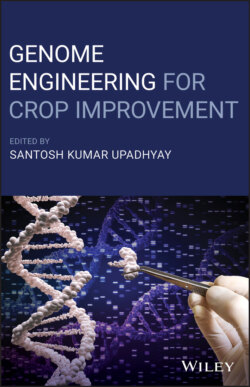Читать книгу Genome Engineering for Crop Improvement - Группа авторов - Страница 36
2.3.4 Nano Secondary Ion Mass Spectrometry
ОглавлениеNano Secondary Ion MS (nano SIMS) works based on a coaxial optical design of the ion gun and secondary ion extraction, and on an original magnetic sector mass spectrometer with multicollection. Nano SIMS fills a unique niche as an MS tool for biological analysis by providing unmatched lateral resolution of elemental and isotopic distributions in samples of interest (Nuñez et al. 2018).
Cereals are an important source of Se to humans; many people suffer from Se deficiency in their diet causing malfunctioning of Se‐enzymes, thyroid hormones and the immune system. Conversely, As is toxic and may accumulate in grain at levels that pose a health risk. Due to good sensitivity, it is especially suitable to image distribution of trace mineral nutrients like selenium (Se) or hazardous elements like arsenic (As) (Moore et al. 2010). Therefore, Nano SIMS was used to determine the localization of Se in wheat and As in rice. Combined synchrotron X‐ray fluorescence (S‐XRF) and Nano SIMS analysis utilized the strengths of both techniques. Selenium was concentrated in the protein surrounding the starch granules in the starchy endosperm cells and more homogeneously distributed in the aleurone cells but with Se‐rich hotspots. Arsenic was concentrated in the sub‐aleurone endosperm cells associated with the protein matrix, rather than in the aleurone cells. Nano SIMS indicated that the high intensity of As, identified in the S‐XRF image was localized in micrometer‐sized hotspots near the ovular vascular trace and nucellar projection.
In addition, Nano SIMS was also used to localize Ag in rice grains. The images revealed that the silver is concentrated in the aleuronic layer of the rice bran. Its concentration decreases in the sub‐aleurone and becomes negligible in the endosperm. Accumulation of silver does not alter the grain morphology and chemical characteristics. The metal may be extracted from the bran after milling of the rice, thereby causing no hazards in associated foodstuffs (Sen Gupta et al. 2017).
